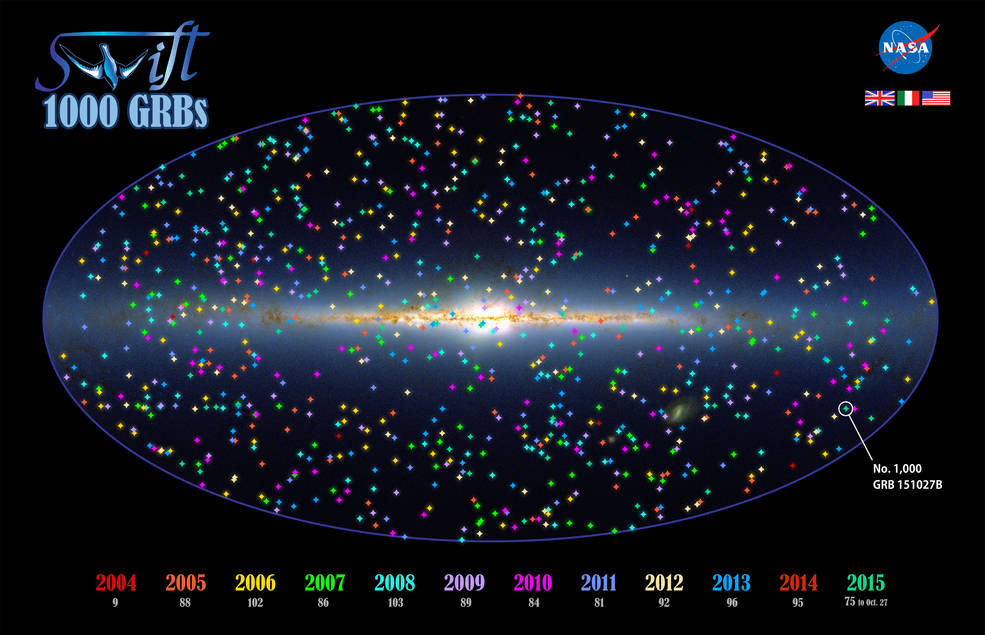
 Credit: NASA's Goddard Space Flight Center and 2MASS/J. Carpenter, T. H. Jarrett, and R. Hurt
Credit: NASA's Goddard Space Flight Center and 2MASS/J. Carpenter, T. H. Jarrett, and R. Hurt
1000 Bursts in 4000 days
NASA's Swift space observatory is an incredibly productive discovery machine. Launched on November 20, 2004, Swift's primary goal is to find and localize gamma-ray bursts, and report their position and properties to the world-wide community of astronomers. Gamma-ray bursts are so interesting because they are the most powerful explosions known, and they often mark the death of a very massive star and the birth of a new black hole. GRBs are so powerful that they can be seen to extraordinary distances; and, because of the finite speed of light, distant gamma-ray bursts provide a probe of the very young Universe. At 6:41 p.m. EDT, on Oct. 27, 2015, Swift detected its thousandth gamma-ray burst, GRB 151027B. The image above shows the distribution on the sky of the Swift bursts, color-coded by year of discovery. The sky map is in a coordinate system in which our Milky Way galaxy stretches across the middle of the map. As can be seen, GRBs are spread across the entire map, showing no enhancement near the Milky Way. The location of GRB 151027B is labelled. Subsequent observations of GRB 151027B using the X-Shooter instrument on the European Very Large Telescope showed that this particular burst occurred more than 12 billion years ago. In addition to detecting GRBs, Swift also makes observations of stars, galaxies and other explosions that occur in the Universe, like powerful stellar flares, erupting black holes, spinning neutron stars, and supernovae. Astronomers hope that Swift's enormously productive mission continues for years to come.
Published: November 23, 2015
<
HEA Dictionary ● Archive
● Search HEAPOW
● Other Languages
● HEAPOW on Facebook
● Download all Images
● Education ● HEAD
>

Each week the HEASARC
brings you new, exciting and beautiful images from X-ray and Gamma ray
astronomy. Check back each week and be sure to check out the HEAPOW archive!
Page Author: Dr. Michael F. Corcoran
Last modified Tuesday, 27-Feb-2024 10:15:22 EST


